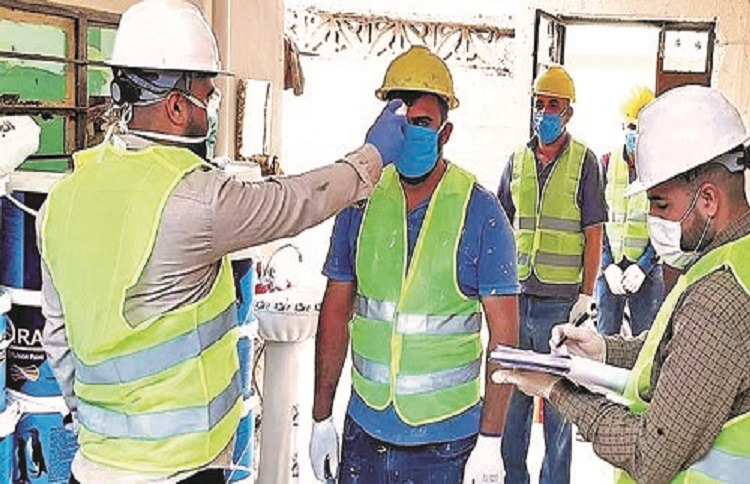
By Pooya Stone
The story of the Iranian construction workers is going back to the last few years. When the fluctuation of the currency and the high cost forced Iran’s Kurdish people to travel to the Iraqi Kurdish region to find a job.
They mostly enter Iraq with a tourist visa. It was in May 2019 that the calculations of the members of the Supreme Council of Labor announced the living basket of any Iranian labor to be 6.4 million Tomans. While the wage of a worker in Iran barely reached 2 million Tomans and the stagnation of the housing market has pushed workers’ wage to its lowest position.
But in 2018 the minimum wage of the Iraqi workers was 350,000 dinars, equivalent to $290. While in the same year the minimum wage of Iran’s workers was $150, and this situation encouraged many of Iran’s workers in the Kurdish region to go to Iraq. According to the labor activists, this number is 35,000.
But since the coronavirus has arrived all of them have lost their jobs. Their tourist visas are expired, and the costs of staying for six months was $1,500. Those who decided to join these 35,000 thousand workers gave up because reaching Sulaymaniyah with a smuggler would cost them $400, and the fear of being shot by the Iraqi police is one of their concerns too.
Koorosh, one of the workers, said: “We did not go because of joy and pleasure. We had no water or electricity there. We were 60 people with just one mobile bathroom. And bathing was only possible with water gallons, and only every 10 days just once.”
Many of them lost their health and ability because of the hard condition in the workplace. And some went to the Syrian border to find a job.
But many of them do not have this possibility either and are forced to work as porters. In which they get 15,000 Tomans per kilo of the load they transport in the uneven border areas between Iraq and Iran. While losing their health, one of the workers “Nasser” said, “This is not a job, this is dying.”
Nasser added, “I was just 13 when I started as a construction worker in Tehran. The situation was bad, and now it is becoming more difficult, and the payment is very low. And the conditions of sickness must be added to it as well. What can we do with all of these barriers?”
When the coronavirus arrived many of these workers lost their jobs and were forced to move back to Iran without having any job. Due to the coronavirus, the Iraqi police are showing no mercy, and they have the right to shoot, even on the people who are working as porters, which is becoming more difficult than before.
One of them, Baha-al-Din, said: “We passed many years with danger. And tolerated derogative looks and behaviors, just not to become unemployed. But now our destiny is unemployment.”
It has been said that only 5000 are still in Sulaymaniyah. Mikael Sedighi, President of the Association of Construction Workers’ Unions of Kurdistan Province, said, “The exact number of construction workers is not known, as they travel to the Kurdistan Region on tourist visas, but about 30 percent of the workers remain in Iraq, based on experience.”
Workers who undoubtedly have more difficult working conditions these days, and the coronavirus forced them to work and the other day to hide from the Iraqi police for a few days. But nevertheless, they prefer to stay across the border just because not to become jobless, which is what they are facing in Marivan, Sanandaj, and Baneh.
Mikael Sedighi added: “Unfortunately, there is no support from the government. During the coronavirus time, only the association with the help of the governor and donors prepared livelihood packages and distributed it among field workers, disabled workers, and the unemployed.”


